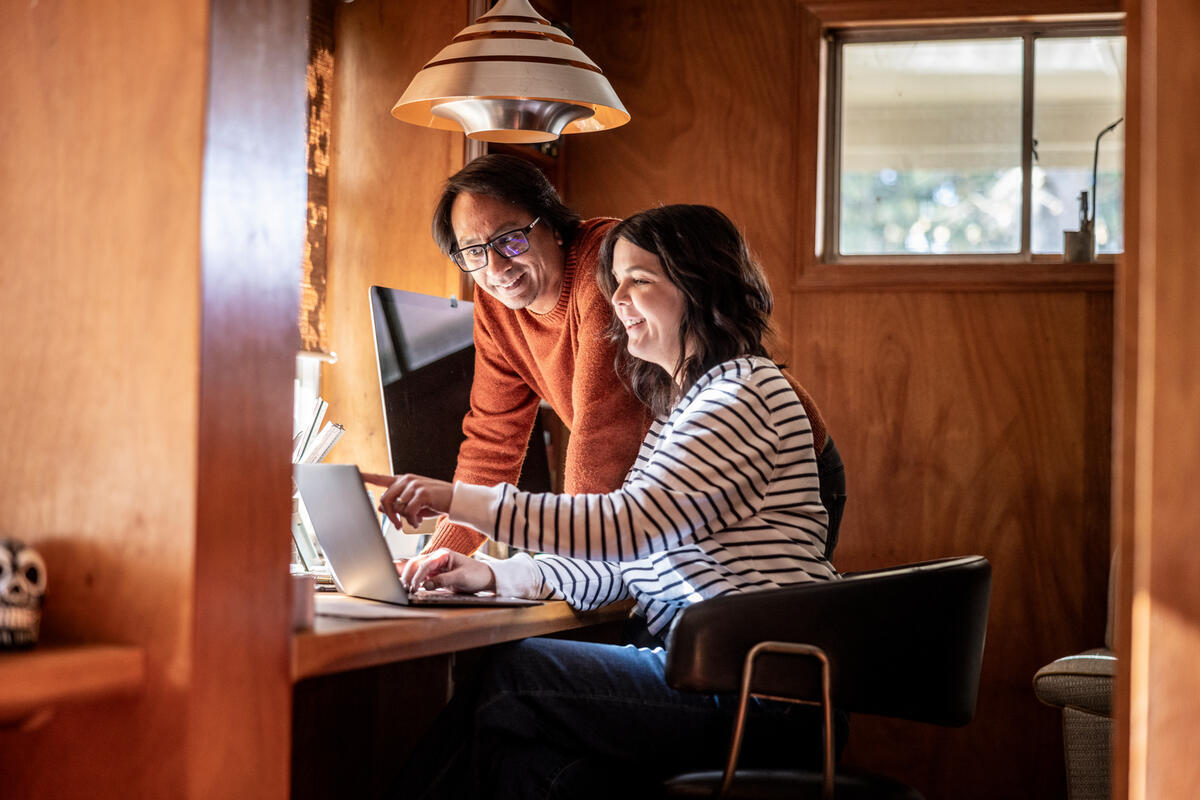The Time Traveler’s Housing Market: Explore Listed Homes From Every Decade
From conversation pits to wrap around porches, these features from years past are still thriving.
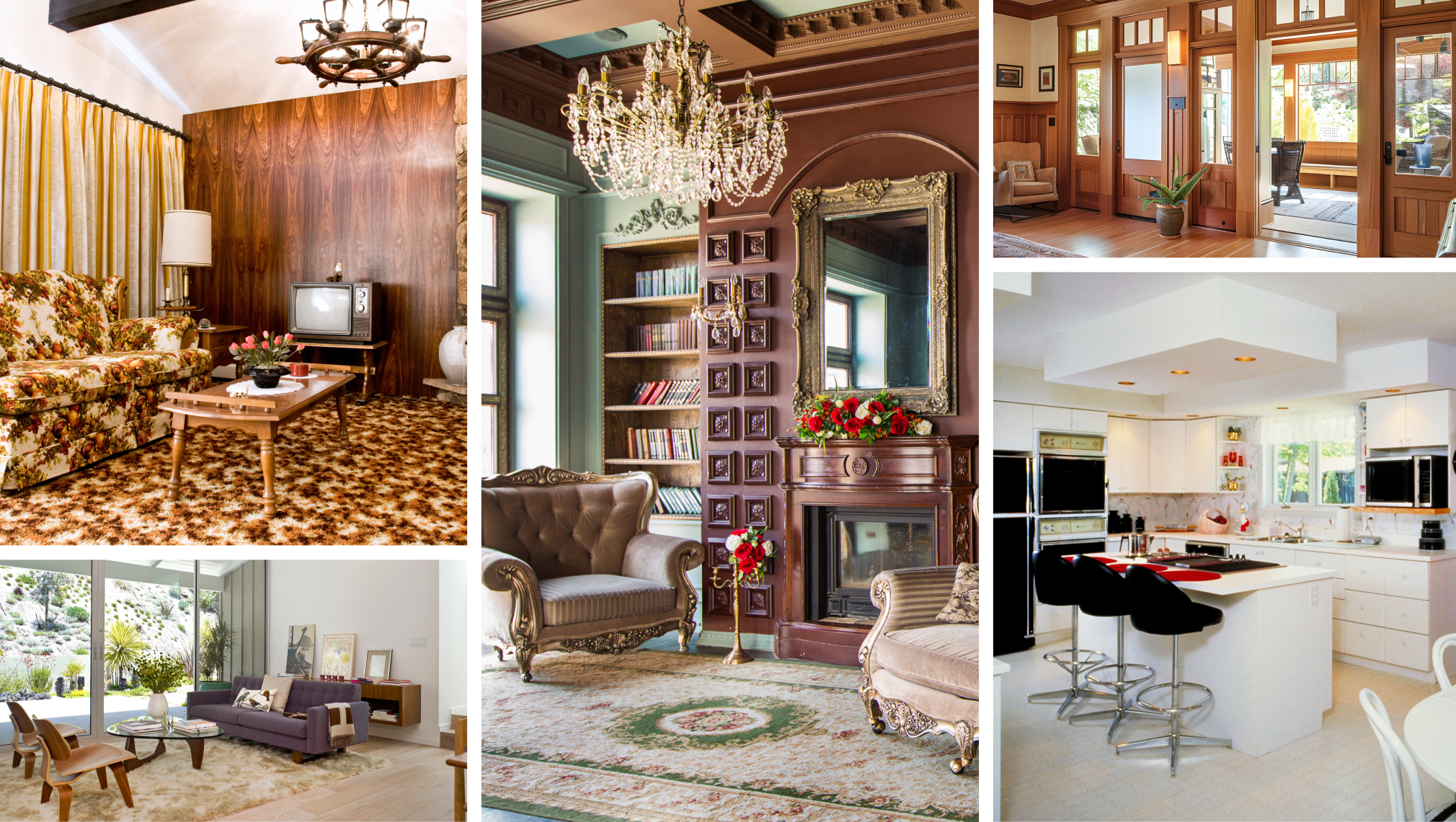

Written by May Ortega on July 30, 2024
You’re scrolling on Zillow and the Victorian charm of an 1800s home catches your eye. Or you’re wowed by the flood of daylight flooding through the generous windows of a home from the 1950s. Luckily, you can find plenty more houses and apartments where those came from, along with builds across the decades on Zillow using our “Year Built” filter. If you’ve ever wondered what makes a home unique to its particular decade, look no further. We’ve rounded up some of our favorite time capsule houses from the last 100-plus years — and who knows, maybe you’ll find your next home obsession, or get inspired to bring your current home back to its original historical glory.
1850s
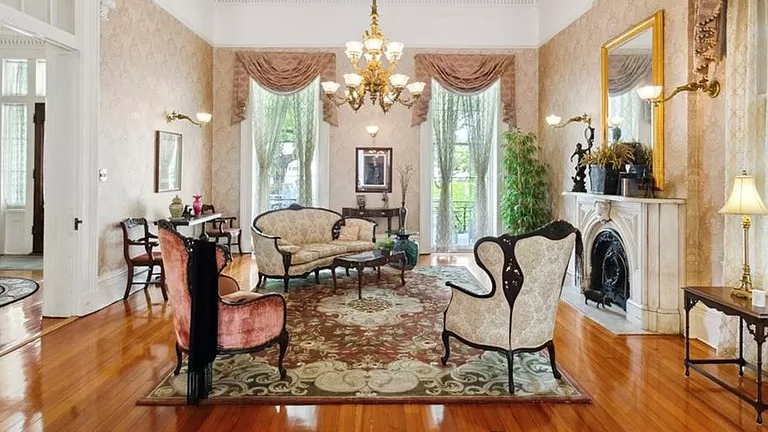
This New Orleans home, built in 1856, looks frozen in time, still adorned with many trademark design features of the period. It boasts a wraparound porch on its first and second floors; a lavish interior with brass chandeliers; and several towering columns topped with Corinthian cornices inside and outside the home. The listing description says this is the largest surviving home designed by New Orleans’ famed 1800s architect Lewis E. Reynolds. And if you’re a fan of the television series “American Horror Story,” this home was featured in the third season.
1910s
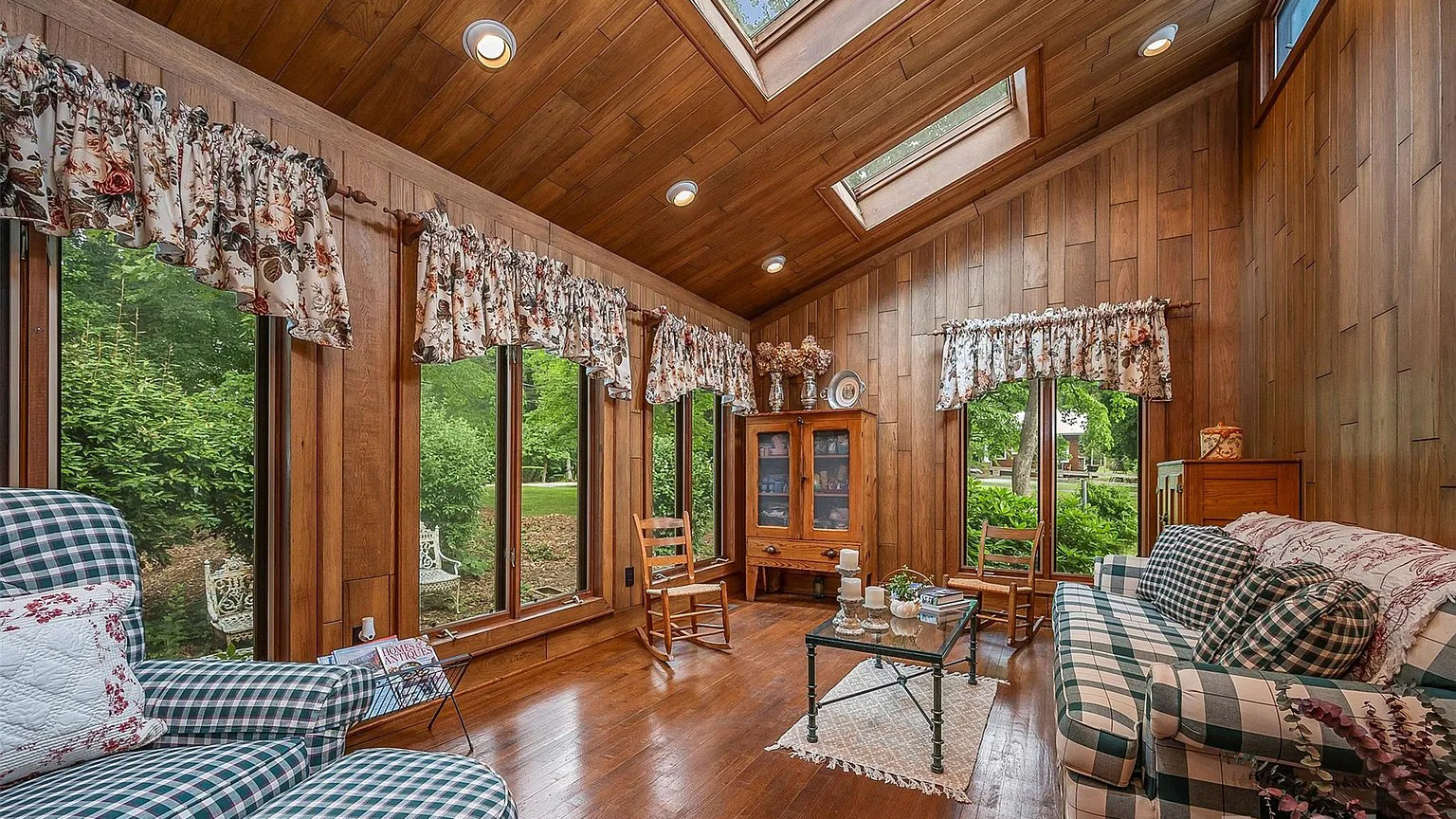
An offshoot of the Victorian-style home, Queen Anne, or shingle style, houses like this one were popular in the U.S. in the late 19th and early 20th century. This home, in particular, was built in 1918 and refurbished almost six decades later. While the home’s interior exhibits tastes from the ’80s throughout, several hallmarks of its period remain intact, like the Palladian windows and eight sets of French doors — another popular feature at the turn of the century. Also take note of the many boxy rooms that are well-defined and separated from each other.
1920s
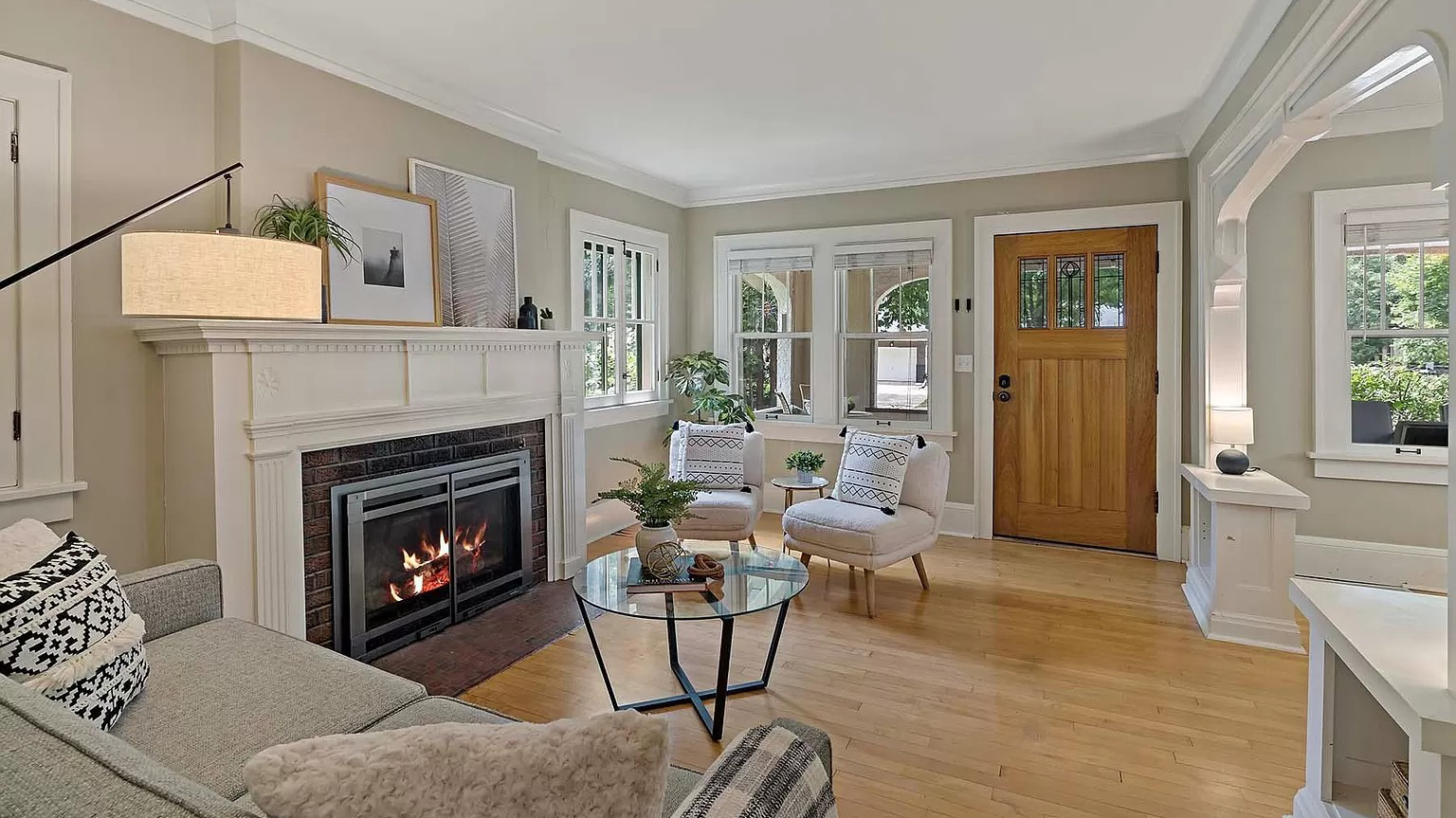
The 1920s saw the rise of the Arts and Crafts movement in architecture for American homes. That meant many homes built in this decade took fewer cues from the opulent Victorian style and opted instead for elements that were more utilitarian, while still being thoughtfully crafted. Trademark details of homes in this decade included a large fireplace meant to serve as the centerpiece of the living room, and built-in shelving. Note the larger doorways, allowing for more flow between rooms.
The 1920s home style — like the one featured in the video above — is a departure from most home styles of the past, where separation was a clear feature. Houses of this era are a mix of both, so if you’re not sure whether you prefer a more open or closed floor plan, 1920s homes may be a happy medium.
1930s
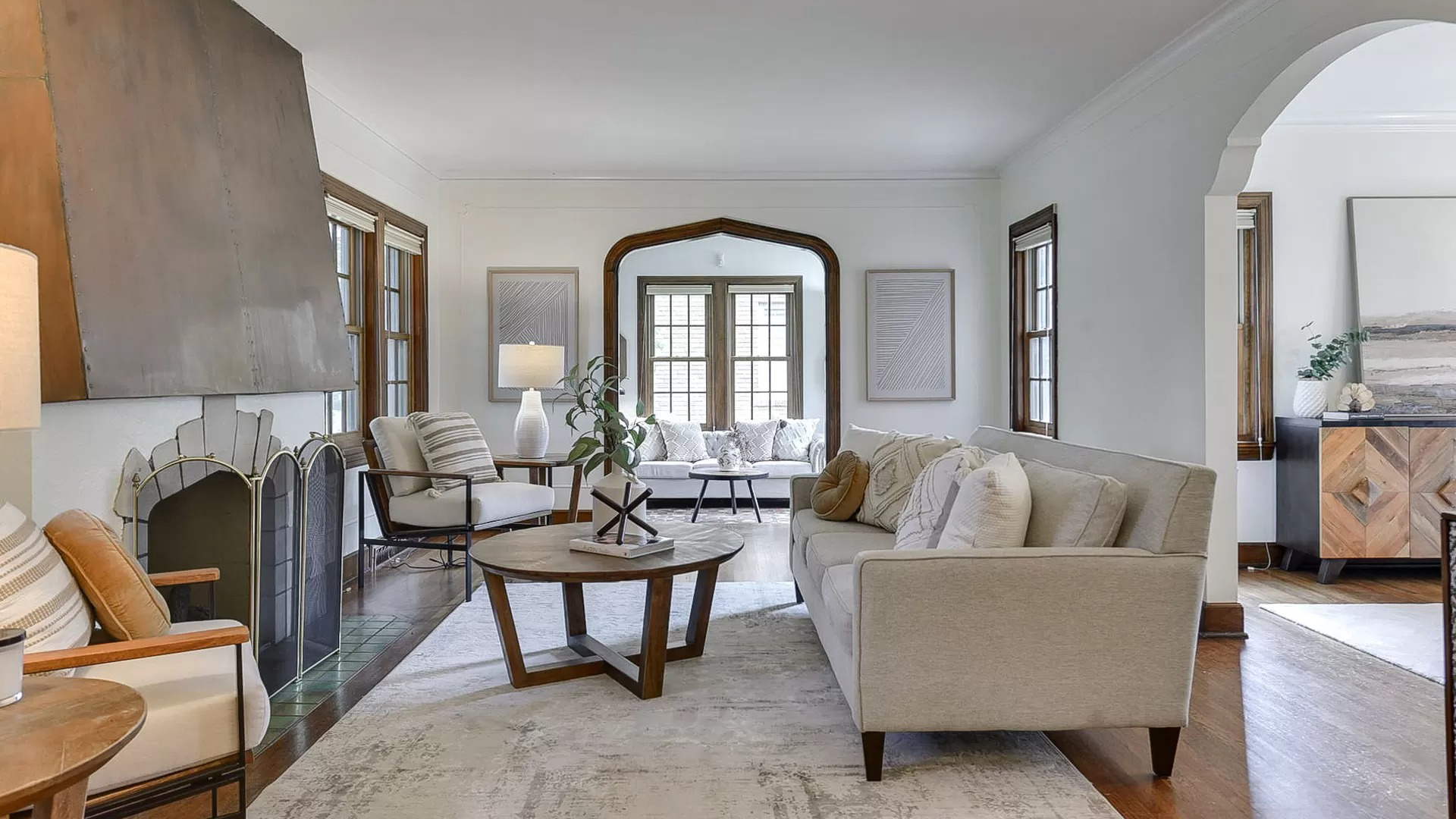
The Tudor Revival architectural style, with Gothic-inspired arched doorways and striking pitched roofs, was all the rage in the 1930s. They are more ornate than American houses of the past, borrowing many features of medieval architecture. This decade also expanded on trends that began in the previous decade. If the 1920s started easing into open-concept floor plans, the 1930s took it a step further. Entryways opened into living rooms, and kitchens and dining rooms had little to no separation.
1940s
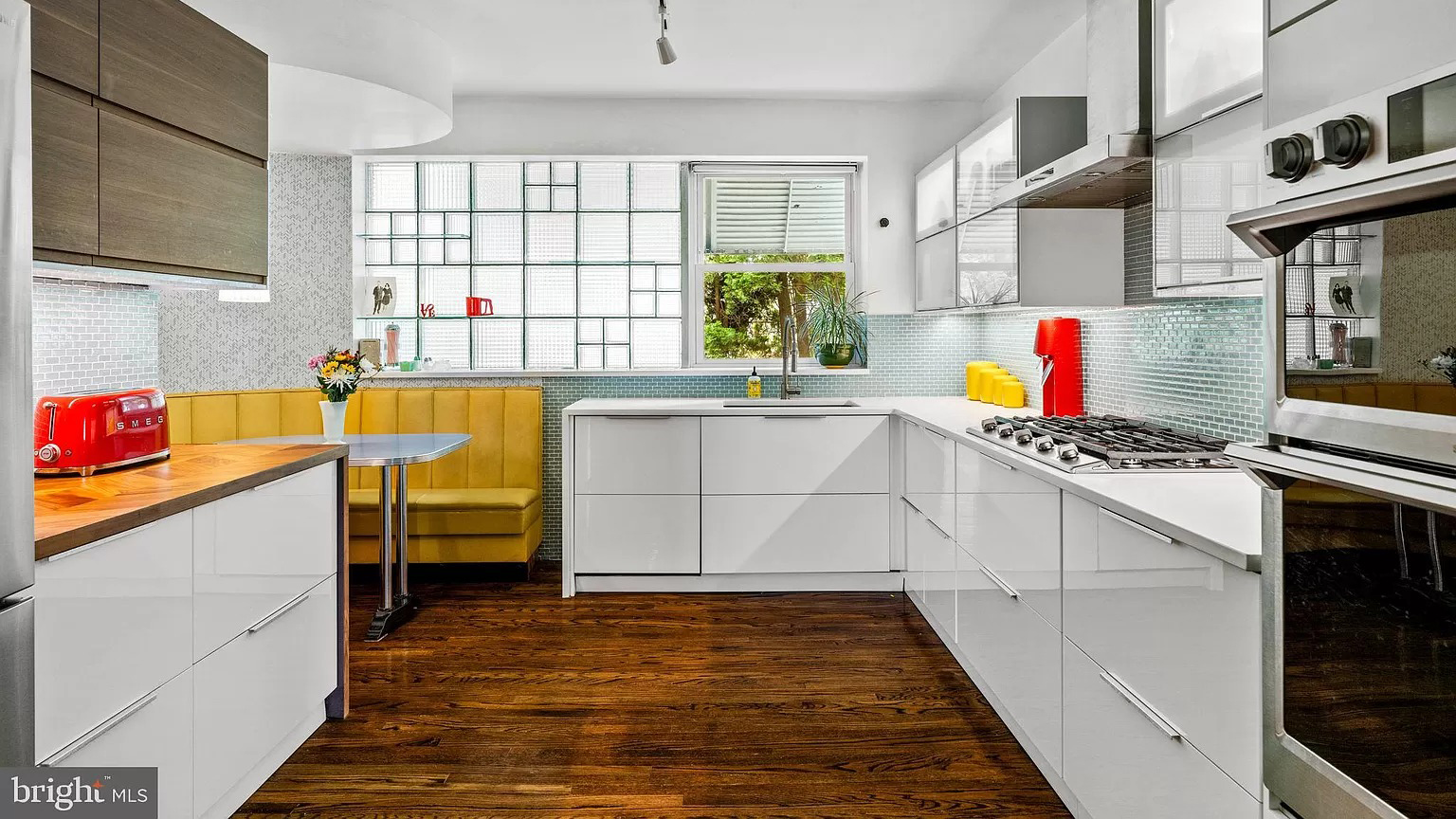
With the end of the second World War in 1945 came the housing boom. Smaller homes and apartment buildings gained traction to house more people faster. Less space made way for “living rooms” — a single area with many uses — as opposed to having a dedicated work space, play room, and a parlor for some casual drinks. Manufactured homes started to pop up, and the race to create more housing meant a focus on function over flare, thus the early signs of minimal design as seen in the Mid-Century Modern style.
The 1940s also marked a time when Americans began bringing brighter, more comforting colors into their living spaces, in conjunction with the last decade’s Art Deco movement. Kitchens, in particular, were a space where homeowners embraced materials that were scarce during the war, like linoleum and bright enamel.
1950s
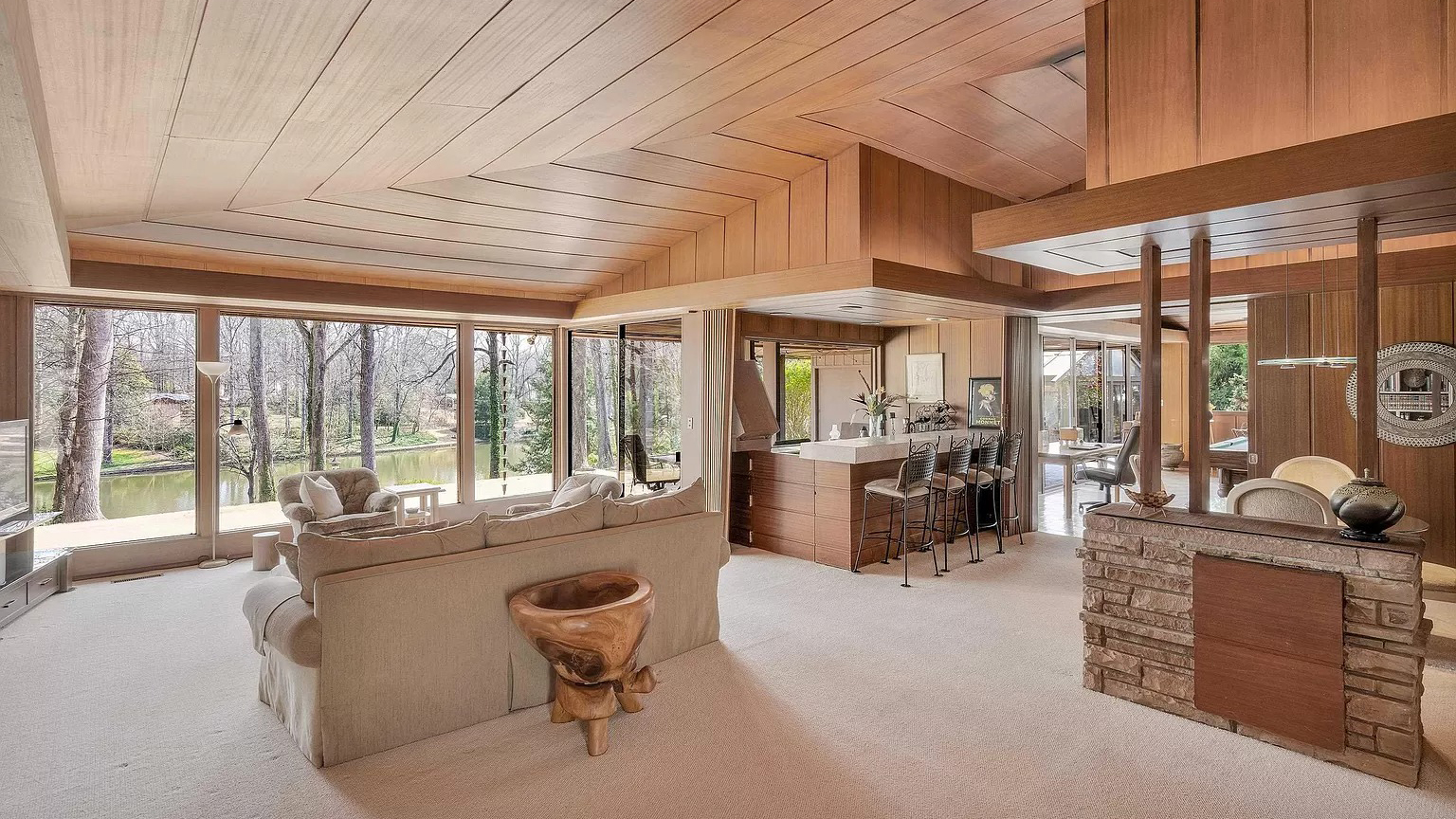
The 1950s marked the height of Mid-Century Modern design. Clean-cut lines and long, large windows were a continuing sign of function and efficiency in architecture. That love of bright colors from the ‘40s continued this decade (take a peek at this home's green bathroom to see what we mean!). One example is the use of colorful linoleum flooring offered by popular manufacturers like Formica. This is also when floor plans become much, much more open, especially in common spaces like the kitchen and living room. It’s a concept that was widely used in later decades, up to today.
1960s
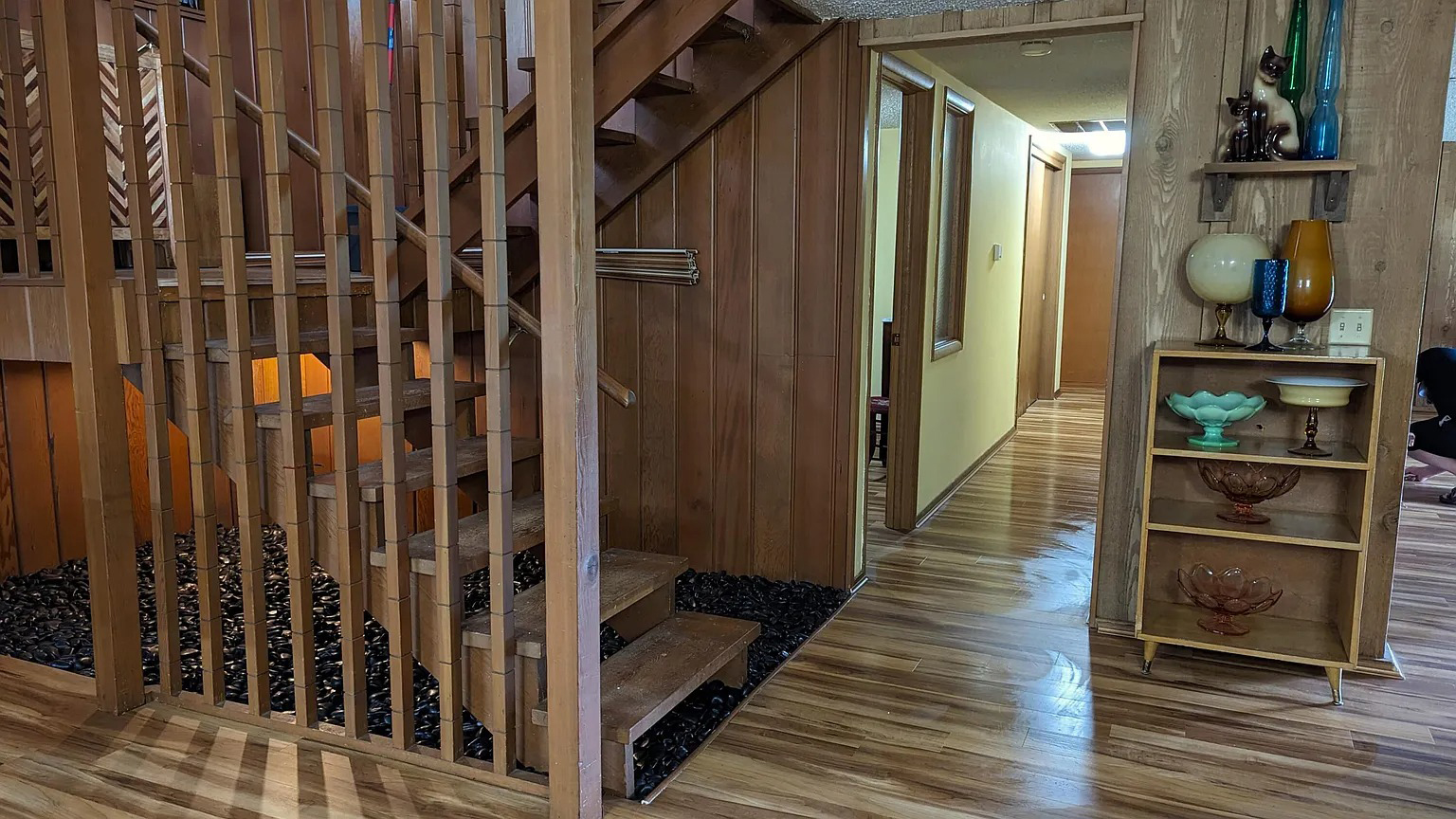
As Mid-Century Modern houses exploded in popularity, the 1960s saw shoppers with growing families looking for designs that offered more space without stretching lot sizes — and thus budgets. One of the best indicators of a home from this time is a split-level feature, where the front door is at ground level, along with a landing and often nothing else. Then two sets of stairs — one going up, the other down — lead you to the bottom and top floors. This design, along with the emerging ranch-style home, helped keep the common spaces together in one part of the home and the bedrooms together in another.
1970s
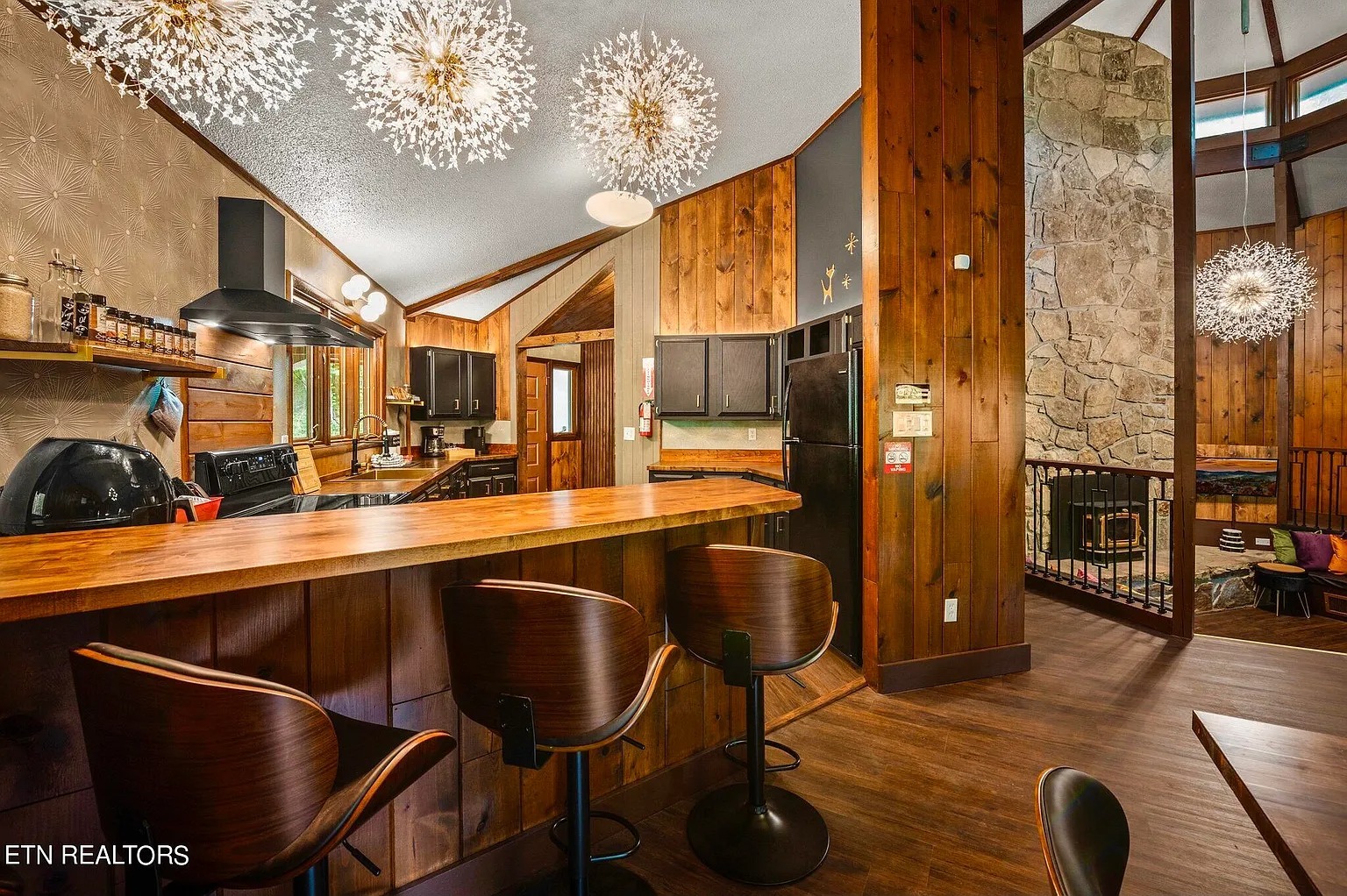
The 1970s were a time of social change in the country, of connecting more with the world around us, and new homes reflected that. Shag, wood veneer paneling, and neutral earth tones took over this decade. People wanted connection with their friends and family as well, making way for conversation pits, also called sunken living rooms. These partially enclosed spaces encouraged intimacy and closeness, and they thrived in this decade. Stone also became a common material to use both inside and outside the home. But the changes don’t stop there. Contemporary homes began to come into the fray, and ranch-style and Colonial houses were the stars of the decade. Many of these homes borrowed traits from decades prior, especially when it came to their large windows.
1980s
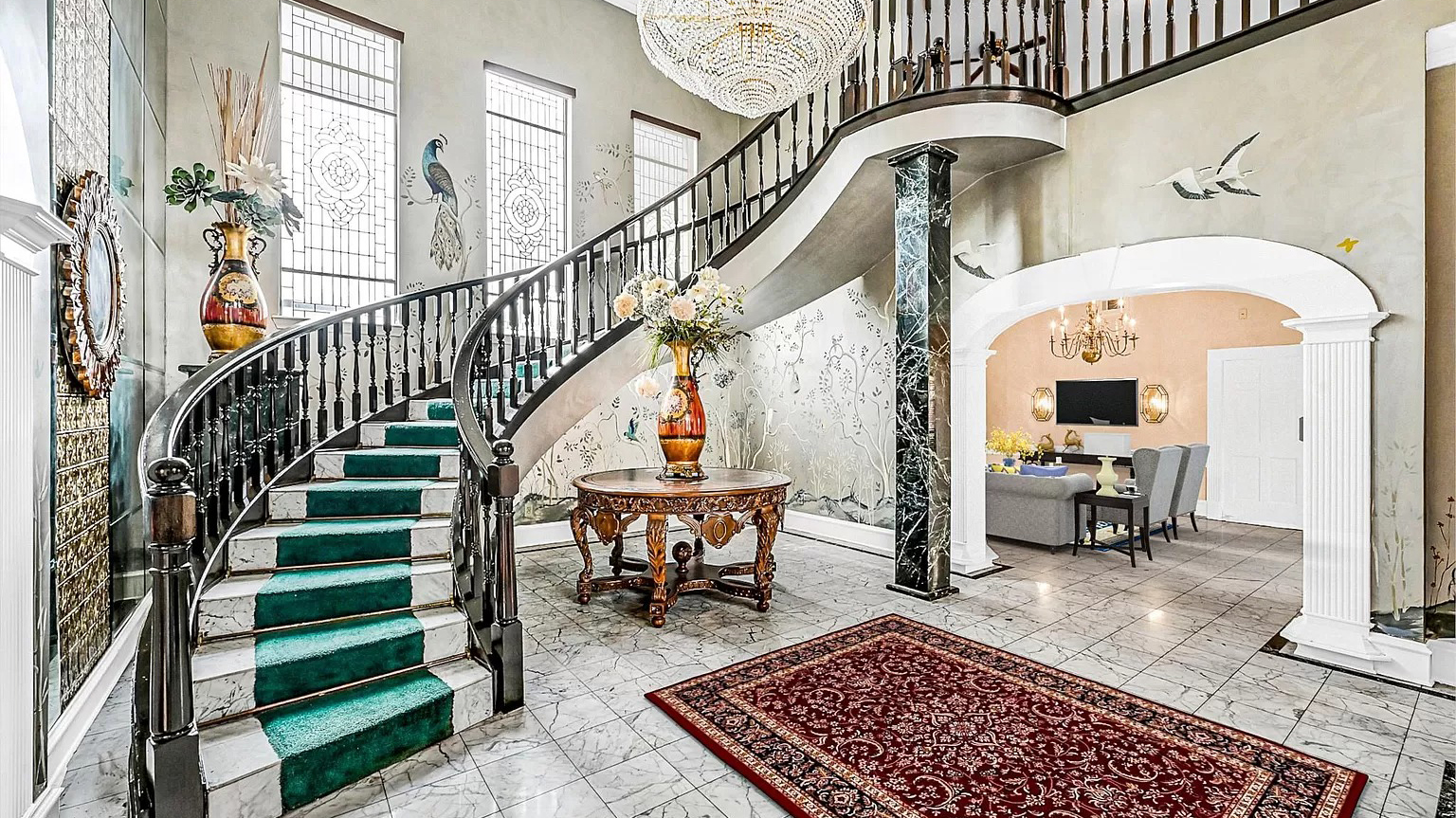
While the more common, contemporary-style homes of this decade took a reigned-in approach with muted or pastel tones, some builders opted for a more bold, colorful, geometric route (think “Miami Vice”) known as Post-Modern. This style was a large contrast to mid-century modern homes, with lots of square shapes in their design. They were often eclectic in their features, like the home above that features an indoor granite column and a spiral staircase.
Both of these styles show the divide between wanting a comfortable, simple life versus leaning into the sort of counter-culture found in this decade’s music and film. Which one do you prefer?
Find an apartment you’ll love on Zillow
With Zillions of up-to-date listings and filters for your must-haves, it's easy to find your perfect apartment on Zillow Rentals.
Search rentals
